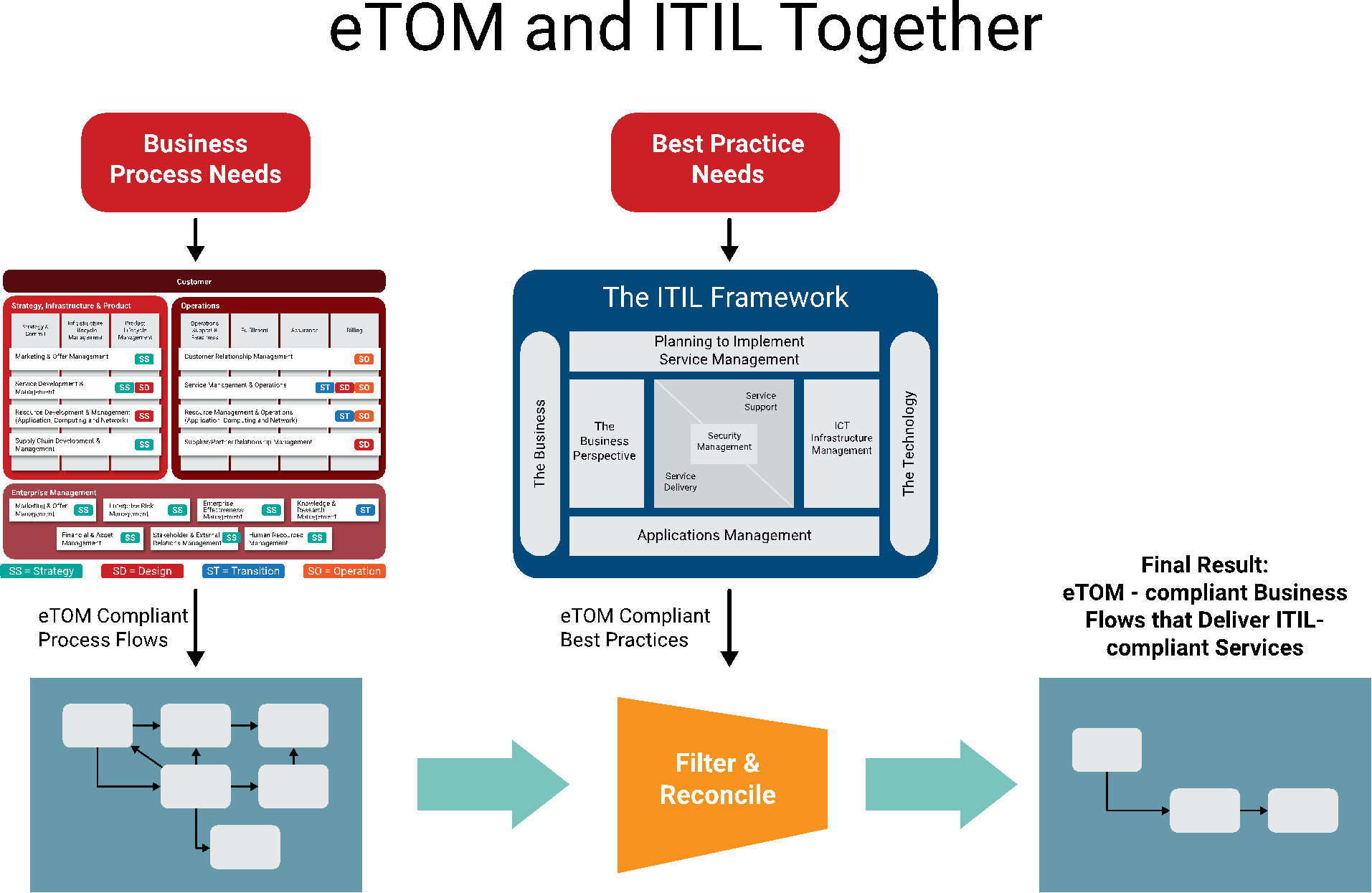The IT industry is blessed with many frameworks that are marketed as the providential solutions to all enterprise problems. Those frameworks are in a constant state of evolution and have the luxury to cover a broad range of topics. It actually is quite astonishing the level of granularity that we can achieve through these best practices whether they come from an IT side or any other. Actually, what is much more interesting is the flexibility these best practices allow us, especially when you combine multiples standards together to address versatile issues within your company.
Further, incident management in IT is one key component in this symbiosis of standards. It is human to believe that the more proved efficient solutions we use, the higher our chances to resolve a problem because let’s face it; if it has worked for Microsoft, IBM or another fortune 500 company, it can certainly resolve any issue a simple company or even a blogger face daily. Seemingly, we can compare these two extremes because standards have been proven to be used in multiple and different contexts. Matter of fact, Incident management is also not an exclusive problem faced by billionaires; it is an issue that any business holder has to think about.
The 21st century is an era blessed with a blossoming technology revolution, yet is faced with cyber attacks that are now a part of the daily life. To tackle this alarming problem, companies are outsourcing their incident management to external parties in hope of building a much more efficient wall around their data and money. Others choose instead to invest more into the IT and security department to prevent such issues.
Incident management in the IT world is roughly defined as the complete set of tools and activities used by an organization in order to identify, analyze and correct vulnerabilities or incidents in order to avoid a relapse or a complication. In brief, Incident management restores IT services to normal working levels.
Incident Management in ITIL
This definition is shared by the ITIL framework where we have both Problem and Incident Management as key processes of the “Service Operation”. The aim of Incident Management is to return IT service delivery to the required service levels as quickly as possible while ensuring a minimum impact on business operations. ITIL also differentiates between Problem and Incident Management as they are both different and can be summarized as follows: A problem is a set of incidents but one incident cannot be a problem; Where Incident Management aims to restore the activity; Problem Management is more focused on the root cause analysis in order to avoid a relapse. This difference in issue Management is not shared by the eTOM Framework.
Incident Management in eTOM
eTOM is a Telecommunications industry framework and that is why it is not as popular as ITIL. This Framework defines a process model designed for this industry; its components describe business processes that aim to categorize process elements and business activities in order to implement the different end-to-end workflows such as Assurance, Billing, Fulfillment, etc. On the conceptual level, eTOM has 3 major process areas: 1. “Strategy, Infrastructure and Product”, 2. “Operations” and 3.“Enterprise Management”. It also separates lifecycle management from operations and daily processes.
Moreover, eTOM uses the term “Problem Handling” instead of “Incident Management” and defines it as follows: “Problem Handling processes to manage the problems reported by customers or any customer-affecting problems detected proactively or reactively by other processes or through monitoring”. Problems interrupt normal service, such as when a user’s computer breaks, when the VPN won’t connect, or when the printer jams. These are unplanned events that require help from the service provider to restore normal function.
The complementary value ITIL and eTOM bring
The difference in the incident management definition can be a deal breaker in companies, especially if the IT resources are ITIL certified or have been accustomed to its semantics. Yet, ITIL and eTOM combined can be the optimal solution to “Incident Management”. Being that, ITIL is more focused on Incident Management especially providing good practices in the IT domain and eTOM provides process elements that can help enterprises define steps and workflows; within their processes, that are specific solutions for a business scenario, in order to achieve the goal that is the “effective resolution of the problem”.
ITIL and eTOM are complementary and can be easily integrated as shown in the figures below:
In the day-to-day actions, a service manager can use ITIL and eTOM to provide a better end-to-end service management. The ITIL guidelines ensure that the service manager minimizes the risks of service unavailability, adjust capacity to real-time demand and increase efficiency and respect of SLAs. Whereas, eTOM processes organize the workflow according to defined business units and processes and is a strong backbone to the incident management strategy.
The telecommunication realm is living some troubled times. Companies have to juggle with a growing data and clients demands that are much more precise and complex to satisfy. Essentially, having telecom companies certified ensures a proactivity in terms of product catalog, SLA’s, incident management and customer management.
From a customer point of view, the best practices are here to add a security layer to products, provide a quality guarantee, and ensure a better customer experience in case of incidents or other.
From a company point of view, the certification provides a range of diverse advantages such as:
- Create a common language to use with the different company staff, partners and suppliers.
- Adopt a classification and structure scheme for incident management to simplify the follow-up and maximize the resolution time.
- Initiate Knowledge management across departments.
- Brief staff about the importance of security and recovery guidelines in case of incidents.
- Improve the cost and risk strategy.
- Understand and provide guidelines to deliver services aligned with the business needs.
- Provide metrics for service management such as, a number of escalation, issues resolved, issues on hold, helpdesk efficiency, and impact damages on operations, etc.
- Be in a continual improvement state.
Nonetheless, when it comes to reality, it is always an advantage to know what are the best practices used worldwide, however, companies can still face problems where they need to follow their instincts even if it goes against what is preconized. These exotic situations are here to remind professionals and companies that nothing can be solved by common or predicted solutions and that once in a while companies have to take risks to learn and grow.
itSMF (organism behind ITIL) and TM Forum (Organism behind eTOM) are also working together to provide companies with studies and guidelines to use their rich combined knowledge. They continually publish papers aiming to explain and clarify how the models can converge and how companies can make the most of ITIL and eTOM’s guidelines.
PECB
Being the most used best practice among service management frameworks, ITIL exceptional to be applied from organizations, oriented to keep their customers first. Besides, its applications have found a place in various industries; including telecommunications. As such, ITIL is offered by PECB in forms of certification and education through training in ISO/IEC 20000; thereby contributing to the improvements of services within your organization. Check our ITIL courses here.











